Feline idiopathic cystitis (FIC) (also known as Feline Interstitial Cystitis) is the most common cause of feline lower urinary tract disease (FLUTD). This article aims to give a detailed explanation of this problem, helping cat owners understand what’s going on when their pets show lower urinary tract signs of illness, and suggesting what can be done to help affected cats.
Quick Overview: Feline Idiopathic Cystitis
What Is Feline Cystitis?
Definitions are important:
- Feline = a cat condition
- Cystitis =bladder inflammation.
- Inflammation = redness, swelling, heat, pain and loss of function, so an inflamed bladder would have a reddened, swollen, heated surface if you could see its inside lining. This is uncomfortable for the affected cat, and the bladder doesn’t work properly: affected cats are unable to hang on to urine in the normal way, so they tend to have accidents in the house.
Types of Feline Cystitis
Feline cystitis has several different variants, so defined because of the underlying cause.
- Bacterial cystitis: the cystitis is caused by a urinary tract infection, with bacteria ascending to the bladder from the outside world via the urethra. This accounts for less than 3% overall of cases of cystitis in cats, although it is more common in older cats compared to younger cats, and more common in female cats because of their shorter, wider urethra which allows bacteria to track up to the bladder more easily than in male cats.
- Fungal cystitis: the cystitis is caused by a fungal infection. This is a very rare condition, caused by fungi like candida, aspergillus, cryptococcus or a number of others, and it can be primary (i.e. the cystitis is started by the fungus) or secondary (the fungal infection starts when the cystitis has already been initiated by some other cause).
- Idiopathic cystitis: the cause remains unknown. This is the main topic of this article.
What Is Feline Idiopathic Cystitis?
Idiopathic – the cause of the condition remains unknown
So in Feline Idiopathic Cystitis, the cat is suffering from inflammation of the bladder with no identifiable cause, even when a full investigative workup is carried out.
The technical definition of Feline Idiopathic Cystitis is “a chronic, sterile, inflammatory condition of the urinary bladder resulting from complex interactions between the urinary bladder, the nervous system, the adrenal glands, and the environment”. The latter three components hint at the link between this condition and some type of stress.
Causes of Feline Idiopathic Cystitis
By definition, a specific cause of feline idiopathic cystitis cannot be identified. However, there are certain factors which are associated with the development of the problem.
- Bladder wall changes. Studies have shown that cats with FIC have an altered internal lining of the bladder, or altered glycosaminoglycan (GAG) layer which lies on top of this internal lining. The result is that this layer becomes more permeable, making it easier for irritants in the urine to penetrate this lining, causing irritation to the nerve-rich deeper layers of the bladder wall. This irritation leads to nerve reflexes with the cat’s central nervous system, leading to increased inflammation.
- Stress response changes. Affected cats have smaller adrenal glands, and have a reduced ability to deal with stress compared to normal cats, producing less cortisone than normal. This is thought to be one of the factors that leads to the increased permeability of the lining of the bladder, and the resulting increased sensitivity of the bladder wall to inflammation following contact with urine. In real life, this means that daily stresses (such as moving house, the introduction of a new cat, living indoors compared to outdoors) may precipitate episodes of cystitis in cats that are prone to this problem.
- Obese and overweight cats are more likely to develop FIC
Clinical Signs of Feline Idiopathic Cystitis
There are four variants of feline idiopathic cystitis that may be seen.
- Most cases are sudden onset episodes of FIC that resolve fairly rapidly by themselves.
- Around one in ten cases are as above, but with frequent, recurrent episodes.
- Around one in ten cases have a persistent version of (1), which never seems to fully resolve.
- A more serious variant, known as obstructive FIC, may be seen in around one in ten cases. Obstructive FIC predominantly affects male cats (due to their longer, narrower urethra which is more prone to urethral obstruction). A urethral obstruction prevents urine from emptying from the bladder and is a medical emergency.
In every variant, the common signs seen by a cat carer include:
- Periuria, which means urinating at inappropriate areas around the home, rather than in the litter tray.
- Hematuria, which means blood in the urine.
- Dysuria, which means difficulty passing urine, often with vocalising as if in pain.
- Pollakiuria, which means increased frequency of urination.
- Stranguria, which means inability to urinate (this is very serious, and is only seen with the fourth version: obstructive FIC).
- As well as these specific signs directly related to inflammation of the bladder, cat carers often notice other abnormal signs, including inappetence, dullness, gastrointestinal upsets (such as vomiting and diarrhea), visible anxiety, and hiding away.
Diagnosing Feline Idiopathic Cystitis
If you notice your cat exhibiting any symptoms of bladder inflammation, take them to a veterinarian for diagnosis.
If your cat shows the signs listed above, it’s important that you schedule a visit to your local DVM veterinarian, where the following steps may be taken.
1. Detailed History Taking
Your veterinarian will ask you a series of questions to find out the full background of your cat’s problem. You will be asked to describe the precise details of all urinary signs, as well as anything else that you have noticed that’s unusual or abnormal about your cat’s recent behaviour.
You will also be asked about any possible recent stresses affecting your cat, such as new pets or people in the home, moving house, changes in furniture, or anything at all that may cause your cat to feel stressed in any way.
2. Physical Examination
Your veterinarian will check your cat over carefully, looking for any signs of any other illnesses that could be causing similar signs. In particular, and very importantly, careful abdominal palpation (feeling the abdomen) will be carried out, checking for the possibility of an obstructed bladder.
3. Urine Sampling and Urinalysis
A urine sample may be collected (often via cystocentesis, when a syringe and needle are used to collect urine directly from the bladder through the abdominal wall in a conscious cat during the consultation.
The sample will be analysed to check for abnormal constituents, but normally the only finding is the presence of red blood cells (blood). Crystals may or may not be found, and this is important to rule out bladder stones, urolithiasis or urethral plugs as contributory causes.
Urine culture may or may not be recommended, to rule out bacterial cystitis. This is more likely to be recommended in older cats, as it is very rare in younger cats.
4. Blood Sampling
Routine biochemical and hematological profiles may be carried out to rule out underlying general medical problems including liver and kidney disease, hyperadrenocorticism (Cushing’s Disease) and diabetes mellitus. Screening for viruses such as Feline Leukemia Virus (FeLV) and Feline Immunodeficiency Virus (FIV) may be recommended.
5. Diagnostic Imaging
X-rays of the abdomen may be carried out to check for the presence of radiodense stones in the urinary tract. Ultrasound may be used to visualise the bladder wall, checking for rarer possibilities such as bladder polyps or neoplasia. CT or MRI scans may be suggested for complicated or frequently recurrent cases.
6. Surgical Intervention
Very rarely, an exploratory operation may be suggested, allowing direct inspection and biopsy collection from the bladder wall.
Feline Idiopathic Cystitis Treatment
While most cases of idiopathic cystitis will resolve on their own, some cats will require treatment. Notably, cats with a urethral obstruction require emergency life-saving treatment as soon as possible.
The signs of Feline Idiopathic Cystitis resolve spontaneously within a few days in around 85% of cats, whether or not treatment is given.
However, cats with obstructive FIC (complete urinary obstruction) need urgent, life-saving, emergency treatment, so it is critically important that all cats that show signs of FIC are promptly examined by a veterinarian.
Furthermore, many cats with FIC seem to be distressed and in pain, due to the inflammation of the bladder sometimes combined with urethral spasms, so treatment is usually recommended to try to ease this. However, there is no specific licensed treatment for FIC.
1. Pain Relief
Different types of pain relief may be suggested, including gabapentin, butorphanol, or buprenorphine. Non Steroidal Anti Inflammatory Drugs (NSAIDs) may be recommended by some clinicians. You should closely follow the specific advice of your veterinarian, as inappropriate use of such medication can be dangerous.
2. Anti-Anxiety Medication
Amitriptyline, a tricyclic antidepressant (TCA), or other variants of this type of medication may be recommended. Alternatively, fluoxetine, or other selective serotonin reuptake inhibitors (SSRIs), may be prescribed. Again, you need to follow the advice given to you by your vet.
3. Antibiotics
FIC is a sterile problem, and bacterial cultures of the urine are negative, so antibiotics will have no impact on your cat’s recovery. However some clinicians may recommend antibiotics if they are concerned about the possibility of underlying or concurrent bacterial cystitis.
4. Other Medication
Maropitant (Cerenia) may be suggested, anti-spasmodic medication may be used, and pentosan polysulfate has also been suggested, but these are not always licensed for this purpose, so their use is a decision for your veterinarian, depending on the specifics of an individual case. The risk of side effects compared to the proven benefits of any medication needs to be discussed in each case.
Therapy for Long-Term Management of FIC
1. Stress Reduction
The best way to manage FIC is to try to reduce any stress in your cat’s life since the timing of the development of the condition is closely correlated to stressful incidents.
It can be difficult for humans to understand what is stressful in a cat’s life, and it’s worth trying to adopt a “cat’s eyes” view of your cat’s surroundings, aiming at environmental enrichment. This is especially important for indoor-only cats.
Environmental Enrichment
They need to be offered the opportunity to run, climb, and jump, to perch high up and hide away low down, and to use vertical and horizontal scratching posts. These are natural behaviours that cats do in the wild, and if indoor cats cannot carry them out, they are more likely to feel stressed. Room design, with cat-friendly furniture such as cat trees or cat gyms, is critically important.
Social Stressors
You should also pay attention to social stresses that may adversely affect your cat. Cats are very sensitive to the presence of other cats that they do not like, and this can cause problems in multiple cat houses where a number of cats are living in close proximity.
You need to plan cats’ living areas carefully so that they do not upset each other, with plenty of feeding and water locations, as well as multiple litter boxes (one per cat plus one extra, as a rule of thumb). You should also be aware that other cats, outside, can bully cats, even just by staring at them through windows.
Pheromones
Pheromones can also help to reduce stress in cats: artificial analogues of natural cat facial pheromones (e.g. Feliway) have been shown to alleviate stress. These are available as room diffusers and sprays and can be especially useful at times when stress is anticipated (e.g. new pets, travel, new home, etc.) to avoid flare-ups.
2. Nutritional Modification
One of the primary factors in FIC seems to be the irritant/inflammatory nature of urine. Studies have shown that it helps to offer moist food (sachets or canned food) rather than dry food. The theory is that this will lead to increased water consumption, and therefore more dilute urine, which in turn is likely to be less irritant to the lining of the bladder.
The same logic would also suggest that other ways of increasing water consumption may also be helpful e.g. a water fountain (with moving water rather than static), and multiple water bowls in different locations.
It may also be beneficial to feed a diet rich in antioxidants and omega 3 fatty acids, as this may have a general anti-inflammatory effect in the body.
Conclusion
Many cats experience recurring episodes of feline idiopathic cystitis. Long-term management can help to prevent these repeated episodes. Stress management, dietary modification, and good litter box management can all help to prevent FIC.
Feline Idiopathic Cystitis is the most common urinary tract disease in cats. Proper understanding of the condition, along with paying attention to minimising stress in your cat’s life, is the best way of preventing and managing this issue.
Cats that are kept indoors all the time are more prone to stress-related diseases such as FIC, and the current Covid-19 crisis may mean that more cats are being kept indoors just now, so this condition may be seen more widely.
Also Read: Best Cat Food for Urinary Tract Health
Frequently Asked Questions
What's the best food for feline idiopathic cystitis?
Moist food (tins and sachets) is thought to be preferable to dry kibble, largely because of the resulting increase in water consumption. The inclusion of anti-oxidants and omega 3 fatty acids in a diet is also beneficial. Commercial diets designed for cats that are prone to FIC are available.
How long does Feline Idiopathic Cystitis last?
Most cases have episodes that last for a few days, but some cats suffer from repeated episodes that can result in almost continual signs of cystitis.
What can I give my cat for cystitis?
It’s important to discuss this with your veterinarian, since every case is different, requiring an individual approach. In general, you can help your cat by minimising stress using environmental modification, especially in multiple cat households, and for indoor-only cats. It's also important to maximise water intake (e.g. offering moist food and using a cat fountain), as well as feeding a diet rich in anti-oxidants and omega 3 fatty acids.
Can cystitis kill a cat?
Mild forms of cystitis are not likely to be fatal, but around one in ten cases can develop the obstructive form of FIC, which can be rapidly fatal if not addressed promptly. For this reason, every case of cystitis should be taken seriously, with prompt attention from your veterinarian.
How do you know if your cat's bladder is full?
It is difficult for a lay person to make this assessment. The abdomen needs to be palpated, checking for the presence of a solid, balloon-shaped object towards the back of the abdomen, and this is a skill that veterinarians learn during training in veterinary medicine. You may wish to ask your veterinarian to show you how to do this, as it is not a skill that can be easily explained in writing.
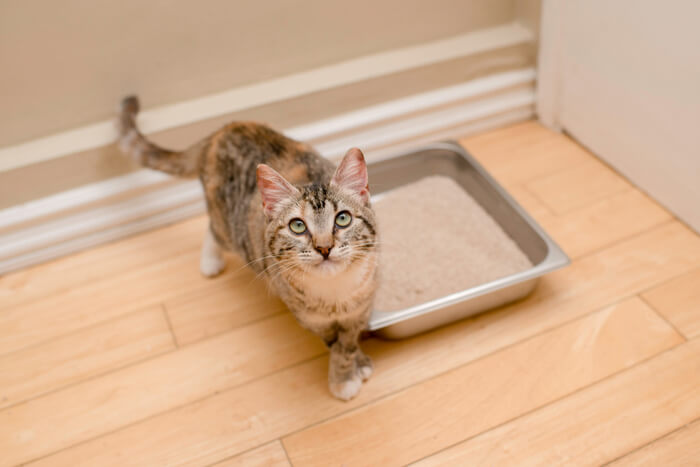
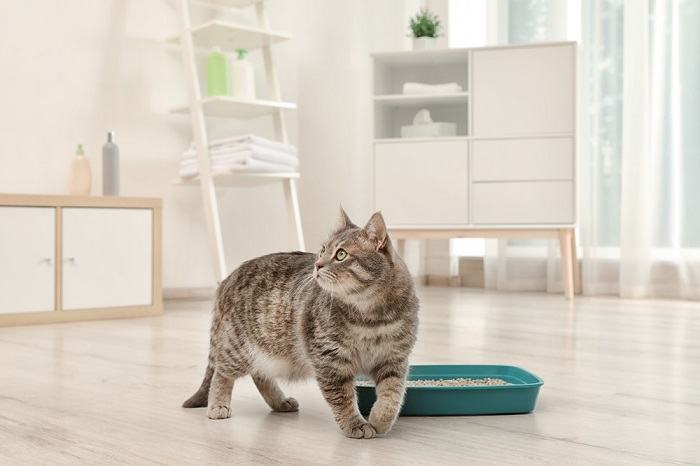
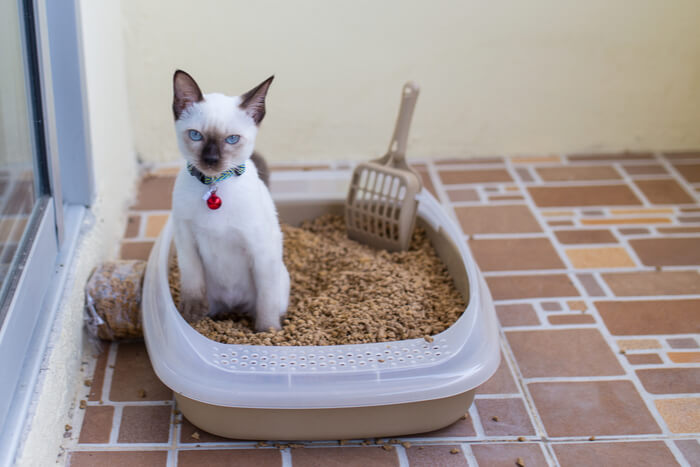
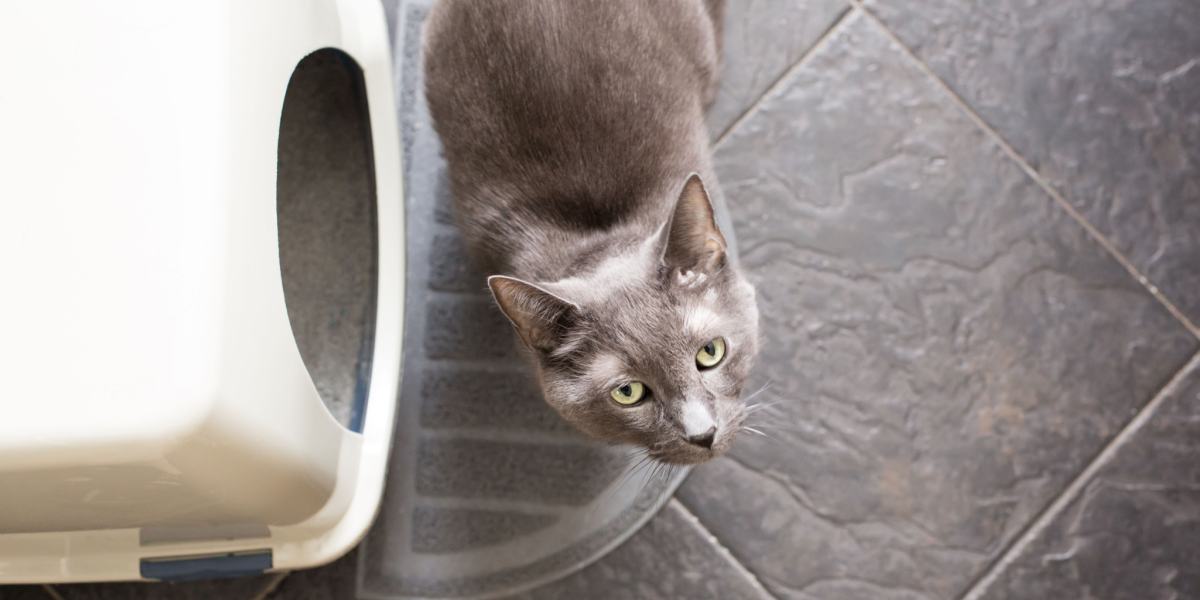



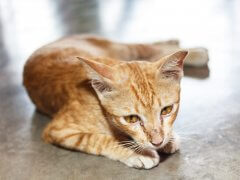




This was very helpful & informative. I have a kitty with gi large cell lymphoma and urinary cystitis. There are several vets on the case. The last one said to use a large dose of cerenia. I questioned this but I did it anyway. It was NOT helpful & made the cat had reactions to it.
Hello!
I have a 4 year old male cat with a history of cystitis. Do you have any recommendations for omega 3 or antioxidant supplements or foods to incorporate into his diet? I see plenty of omega 3 supplements to choose from but not many antioxidant supplements? Thanks in advance
Hi Vanessa! ThorneVet has an antioxidant supplement for small animals that may be worth trying. Here’s a link